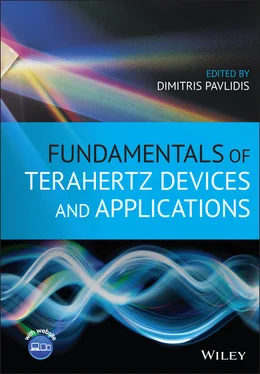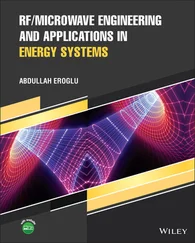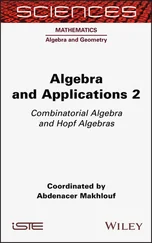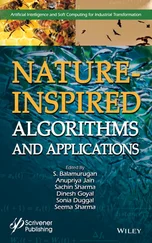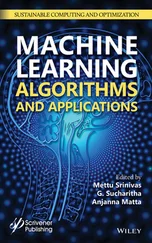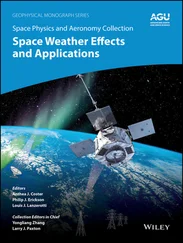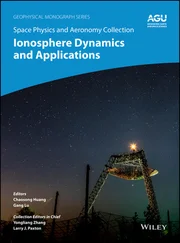Fundamentals of Terahertz Devices and Applications
Здесь есть возможность читать онлайн «Fundamentals of Terahertz Devices and Applications» — ознакомительный отрывок электронной книги совершенно бесплатно, а после прочтения отрывка купить полную версию. В некоторых случаях можно слушать аудио, скачать через торрент в формате fb2 и присутствует краткое содержание. Жанр: unrecognised, на английском языке. Описание произведения, (предисловие) а так же отзывы посетителей доступны на портале библиотеки ЛибКат.
- Название:Fundamentals of Terahertz Devices and Applications
- Автор:
- Жанр:
- Год:неизвестен
- ISBN:нет данных
- Рейтинг книги:4 / 5. Голосов: 1
-
Избранное:Добавить в избранное
- Отзывы:
-
Ваша оценка:
- 80
- 1
- 2
- 3
- 4
- 5
Fundamentals of Terahertz Devices and Applications: краткое содержание, описание и аннотация
Предлагаем к чтению аннотацию, описание, краткое содержание или предисловие (зависит от того, что написал сам автор книги «Fundamentals of Terahertz Devices and Applications»). Если вы не нашли необходимую информацию о книге — напишите в комментариях, мы постараемся отыскать её.
Fundamentals of Terahertz Devices and Applications
Fundamentals of Terahertz Devices and Applications — читать онлайн ознакомительный отрывок
Ниже представлен текст книги, разбитый по страницам. Система сохранения места последней прочитанной страницы, позволяет с удобством читать онлайн бесплатно книгу «Fundamentals of Terahertz Devices and Applications», без необходимости каждый раз заново искать на чём Вы остановились. Поставьте закладку, и сможете в любой момент перейти на страницу, на которой закончили чтение.
Интервал:
Закладка:
Table of Contents
1 Cover
2 Title Page
3 Copyright Page
4 Dedication Page
5 About the Editor
6 List of Contributors
7 About the Companion Website
8 1 Introduction to THz Technologies
9 2 Integrated Silicon Lens Antennas at Submillimeter‐wave Frequencies 2.1 Introduction 2.2 Elliptical Lens Antennas 2.3 Extended Semi‐hemispherical Lens Antennas 2.4 Shallow Lenses Excited by Leaky Wave/Fabry–Perot Feeds 2.5 Fly‐eye Antenna Array Exercises References
10 3 Photoconductive THz Sources Driven at 1550 nm 3.1 Introduction 3.2 1550‐nm THz Photoconductive Sources 3.3 THz Metrology 3.4 THz Antenna Coupling 3.5 State of the Art in 1550‐nm Photoconductive Sources 3.6 Alternative 1550‐nm THz Photoconductive Sources 3.7 System Applications Exercises References Explanatory Notes (see superscripts in text)
11 4 THz Photomixers 4.1 Introduction 4.2 Photomixing Basics 4.3 Modeling THz Photomixers 4.4 Standard Photomixing Devices 4.5 Optical Cavity Based Photomixers 4.6 THz Antennas 4.7 Characterization of Photomixing Devices Exercises References
12 5 Plasmonics‐enhanced Photoconductive Terahertz Devices 5.1 Introduction 5.2 Photoconductive Antennas 5.3 Plasmonics‐enhanced Photoconductive Antennas 5.4 Conclusion and Outlook Exercises References
13 6 Terahertz Quantum Cascade Lasers 6.1 Introduction 6.2 Fundamentals of Intersubband Transitions 6.3 Active Material Design 6.4 Optical Waveguides and Cavities 6.5 State‐of‐the‐Art Performance and Limitations 6.6 Novel Materials Systems 6.7 Conclusion Acknowledgments Exercises References
14 7 Advanced Devices Using Two‐Dimensional Layer Technology 7.1 Graphene‐Based THz Devices 7.2 TMD Based THz Devices 7.3 Applications Exercises References
15 8 THz Plasma Field Effect Transistor Detectors 8.1 Introduction 8.2 Field Effect Transistors (FETs) and THz Plasma Oscillations 8.3 THz Detectors Based on Silicon FETs 8.4 Terahertz Detection by Graphene Plasmonic FETs 8.5 Terahertz Detection in Black‐Phosphorus Nano‐Transistors 8.6 Diamond Plasmonic THz Detectors 8.7 Conclusion Exercises References
16 9 Signal Generation by Diode Frequency Multiplication 9.1 Introduction 9.2 Bridging the Microwave to Photonics Gap with Terahertz Frequency Multipliers 9.3 A Practical Approach to the Design of Frequency Multipliers 9.4 Technology of THz Diode Frequency Multipliers 9.5 Power‐Combining at Sub‐Millimeter Wavelength 9.6 Conclusions and Perspectives Exercises References Explanatory Notes (see superscripts in text)
17 10 GaN Multipliers 10.1 Introduction 10.2 Theoretical Considerations of GaN Schottky Diode Design 10.3 Fabrication Process of GaN Schottky Diodes 10.4 Small‐signal High‐frequency Characterization of GaN Schottky Diodes 10.5 Large‐signal On‐wafer Characterization 10.6 GaN Diode Implementation for Signal Generation 10.7 Multiplier Considerations for Optimum Performance Exercises References
18 11 THz Resonant Tunneling Devices 11.1 Introduction 11.2 Principle of RTD Oscillators 11.3 Structure and Oscillation Characteristics of Fabricated RTD Oscillators 11.4 Control of Oscillation Spectrum and Frequency 11.5 Targeted Applications Exercises References
19 12 Wireless Communications in the THz Range 12.1 Introduction 12.2 Evolution of Telecoms Toward THz 12.3 THz Technologies: Transmitters, Receivers, and Basic Architecture 12.4 Devices/Function Examples for T‐Ray CMOS 12.5 THz Links 12.6 Toward Normalization of 100G Links in the THz Range 12.7 Conclusion 12.8 Acronyms E12.1 Link Budget of a THz Link References
20 13 THz Applications: Devices to Space System 13.1 Introduction 13.2 THz Heterodyne Receivers 13.3 THz Space Applications 13.4 Summary and Future Trends Acknowledgment Exercises References
21 Index
22 End User License Agreement
List of Tables
1 Chapter 3 Table 3.1 Simulation parameters for InGaAs p–i–n photodiode. Table 3.2 Simulation parameters for InGaAs MSM photoconductor. Table 3.3 Comparison among photonic signal generation techniques.
2 Chapter 4Table 4.1 Devices characteristics.Table 4.2 Measured output power at 50 GHz and estimation at 1 THz as a functi...Table 4.3 Dc photoresponse at 1550 nm of 6 × 6 μm 2UTC‐PD and RCEUTC‐PD devic...
3 Chapter 8Table 8.1 A summary of recent plasmonic THz detectors.
4 Chapter 10Table 10.1 GaN and GaAs material properties.Table 10.2 Example of R sestimation for GaN and GaAs.Table 10.3 Material parameters used in numerical simulation (at 300 K).Table 10.4 Parameters of Selberherr's model used in simulation (at 300 K).Table 10.5 Breakdown voltage based on Ionization Integral (at 300 K).Table 10.6 Process flow of the three technologies used in this study.Table 10.7 EC parameters of 4 μm diode.
5 Chapter 12Table 12.1 Various THz communication systems and associated technologies.
6 Chapter 13Table 13.1 Development of THz technology can be sorted based on a few general...Table 13.2 A Submm spectrometer can measure a number of trace gases in the Ma...Table 13.3 A summary of space instruments since 2008.Table 13.4 The HERO concept for OST is based on being able to build and chara...
List of Illustrations
1 Chapter 2 Figure 2.1 (a) Sketch of a planar antenna printed on a dielectric substrate.... Figure 2.2 Geometrical parameters of an elliptical lens. Figure 2.3 (a) Equivalent aperture on top of the elliptical lens antenna. (b... Figure 2.4 (a) Scheme of the critical angle calculation on an elliptical len... Figure 2.5 (a) Incident, reflected, and transmitted power density in a diele... Figure 2.6 Reference system for the evaluation of the far fields radiated by... Figure 2.7 (a) High transmission and high reflection region of a silicon mad... Figure 2.8 Parallel and perpendicular transmission coefficient for a lens ma... Figure 2.9 Synthesis of an elliptical lens from an extended hemispherical le... Figure 2.10 Sketch of the extended semi‐hemispherical lens antenna parameter... Figure 2.11 Directivity of an elliptical lens and an extended hemispherical ... Figure 2.12 Sketch of the silicon lens antenna fed by a leaky‐wave feed geom... Figure 2.13 Real and imaginary parts of the propagation constants k lwof the... Figure 2.14 Input reflection coefficient of a waveguide loaded with a double... Figure 2.15 Sketch of the leaky‐wave feed with its main parameters. The red ... Figure 2.16 Amplitude and phase of the electric centered at a central freque... Figure 2.17 (a) Drawing of the basic parameters of the shallow lens antenna ... Figure 2.18 Optimum (a) taper angle θ fand (b) lens thickness W as a fu... Figure 2.19 (a) The shallow lens of diameter D is defined by a corresponding... Figure 2.20 (a) Radius R and (b) height H of the lens as a function of the d... Figure 2.21 (a) Directivity and (b) Gaussicity achieved for the shallow lens... Figure 2.22 Reflection coefficient centered at a central frequency f for the... Figure 2.23 (a) Sketch of the membrane fabrication process that contains the... Figure 2.24 (a) Sketch of the fabrication process of the shallow silicon len... Figure 2.25 (a) Surface measured of the fabricated lens of D = 2.6 mm. The e... Figure 2.26 Photographs of different lens antenna prototypes fed by leaky‐wa... Figure 2.27 (a) Reflection and (b) transmission coefficient for a silicon le...
2 Chapter 3 Figure 3.1 (a) Power spectrum from commercial EDFA mode‐locked laser. (b) Ti... Figure 3.2 Optical fiber absorption vs wavelength. Figure 3.3 (a) Near‐band‐edge absorption coefficient of GaAs at room tempera... Figure 3.4 (a) Fractional absorption vs epitaxial thickness for a GaAs layer... Figure 3.5 Residual electron concentration (black squares) and resistivity (... Figure 3.6 (a) Conventional 1550‐nm p–i–n photodiode. (b) Conventional MSM b... Figure 3.7 Simulation results for p–i–n InGaAs/InP photodiode, showing trans... Figure 3.8 Simulation results for the lifetime‐limited transfer function, an... Figure 3.9 Comparison between spectral responsivities of 1550‐nm InGaAs MSM‐... Figure 3.10 (a) Energy diagram of an MSM electrode structure with low bias a... Figure 3.11 (a) Cross‐sectional view of photoconductor illuminated from the ... Figure 3.12 (a) Equivalent circuit model for a photoconductive switch. (b) P... Figure 3.13 (a) Reflectance (
Читать дальшеИнтервал:
Закладка:
Похожие книги на «Fundamentals of Terahertz Devices and Applications»
Представляем Вашему вниманию похожие книги на «Fundamentals of Terahertz Devices and Applications» списком для выбора. Мы отобрали схожую по названию и смыслу литературу в надежде предоставить читателям больше вариантов отыскать новые, интересные, ещё непрочитанные произведения.
Обсуждение, отзывы о книге «Fundamentals of Terahertz Devices and Applications» и просто собственные мнения читателей. Оставьте ваши комментарии, напишите, что Вы думаете о произведении, его смысле или главных героях. Укажите что конкретно понравилось, а что нет, и почему Вы так считаете.
